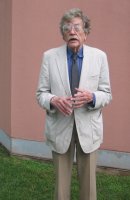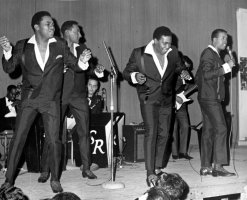Online Magazine
Recent Posts
- Safeguard your Cellphone Photos
- Black & White to Color – Instantly
- Wearing Many Hats
- Video Roundup
- Rescuing Your Blurry Pictures
- Showing Their Age
- What is Your Angle?
- Panorama Photos
- Humorous Photos
- Close Ups
- Fisheye Pictures
- Photo Antiquities
- Printing Big
- Appreciating Scale
- Celebrity Sightings
Tags
More Places to Go
- Free "How-To" Books “How To” books for popular cameras 0
- Vist Us on Facebook keep in touch with us on Facebook 2
Archives
- July 2023 (1)
- March 2023 (2)
- February 2023 (1)
- December 2022 (1)
- October 2022 (1)
- September 2022 (8)
- August 2022 (9)
- July 2022 (1)
- June 2022 (1)
- June 2021 (1)
- May 2021 (1)
- March 2021 (5)
- February 2021 (4)
- January 2021 (2)
- April 2019 (1)
- March 2019 (1)
- February 2019 (1)
- October 2018 (2)
- April 2018 (1)
- March 2018 (4)
- February 2018 (1)
- November 2017 (1)
- August 2017 (1)
- June 2017 (1)
- April 2017 (1)
- March 2017 (5)
- February 2017 (2)
- January 2017 (1)
- October 2016 (1)
- September 2016 (1)
- August 2016 (1)
- July 2016 (1)
- May 2016 (1)
- April 2016 (1)
- March 2016 (2)
- February 2016 (1)
- January 2016 (2)
- December 2015 (1)
- November 2015 (1)
- October 2015 (3)
- April 2015 (1)
- March 2015 (5)
- February 2015 (1)
- January 2015 (4)
- December 2014 (2)
- November 2014 (5)
- October 2014 (2)
- September 2014 (1)
- August 2014 (2)
- July 2014 (1)
- May 2014 (1)
- April 2014 (5)
- March 2014 (5)
- December 2013 (2)
- November 2013 (18)
- October 2013 (1)
- September 2013 (1)
- August 2013 (1)
- July 2013 (1)
- June 2013 (3)
- May 2013 (1)
- April 2013 (2)
- March 2013 (1)
- February 2013 (1)
- January 2013 (1)
- December 2012 (1)
- November 2012 (2)
- October 2012 (2)
- September 2012 (5)
- August 2012 (2)
- July 2012 (1)
- June 2012 (1)
- May 2012 (1)
- April 2012 (4)
- March 2012 (1)
- February 2012 (1)
- January 2012 (3)
- December 2011 (1)
- November 2011 (3)
- October 2011 (1)
- September 2011 (2)
- August 2011 (2)
- June 2011 (3)
- May 2011 (4)
- April 2011 (8)
- March 2011 (8)
- February 2011 (10)
- January 2011 (6)
- December 2010 (11)
- November 2010 (14)
- October 2010 (6)
- September 2010 (12)
- August 2010 (2)
- July 2010 (4)
- June 2010 (3)
- May 2010 (1)
- April 2010 (1)
- March 2010 (2)
- February 2010 (1)
- January 2010 (1)
- December 2009 (1)
- November 2009 (2)
- October 2009 (2)
- September 2009 (1)
- August 2009 (3)
- July 2009 (2)
- June 2009 (1)
- May 2009 (2)
- April 2009 (1)
- March 2009 (2)
- February 2009 (1)
- January 2009 (3)
Earth Day 2017
22nd April 2017
…how much do we care for Mother Earth?
|
|
||
|
April 22, 2017
“Today we celebrate the 47th anniversary of Earth Day. Here I recount some thoughts since this movement was in its infancy.” |
 |
 |
|
|
||
Earth Day was founded by the late Senator Gaylord Nelson in 1970. His intent was crystal clear – to focus attention on the environment, to assess the effect that our population is placing on our limited natural resources, and to implement the urgent actions to keep the earth sustainable for generations to come.
In these intervening 47 years, a generation or two has passed. Yet the Nelson’s urgency has not translated into the wide and responsive action that many of his disciples would have hoped.
Could it be that Nelson’s intent is now gaining traction? Exactly one year ago under the auspices of the United Nations, the Paris Agreement was signed. It’s long name is the UN Framework Convention on Climate Change for limiting greenhouse gases emissions. This agreement became effective in November 2016. So it seems that little by little we are inching our way towards a gentler and kinder treatment of Mother Earth.
To borrow a phrase from Vonnegut, follow me for a few minutes as my mind becomes unstuck in time.
My favorite author was the late Kurt Vonnegut. When he died in 2007, I recalled meeting him in the late 1960’s. Vonnegut was invited to be “writer in residence” while I was studying at the University of Michigan (UofM) in Ann Arbor. As a wildly popular author of this time, he was sure to have a large, welcoming audience at UofM.
He sometimes visited “The Brown Jug” for coffee and to smoke cigarettes. As an aside, he claimed that smoking was the slowest form of suicide. My wife Kris, also a student, waitressed here and on occasion would serve him. Due to her hearing difficulty she admitted that she wasn’t a very good waitress and frustrated Vonnegut with her (lack of) service. More to the point, his stay on campus as writer in residence ended prematurely when he abruptly left saying something like: “I’m leaving Ann Arbor since I have nothing more to teach you about writing.” So it goes.
|
|
||
|
|
||
|
|
||
The late 60’s was a very vibrant and exciting, yet conflicted era. From my high school yearbook a Charles Dickens quote describes the period: “it was the best of times and it was the worst of times….we were all going direct to heaven, we were all going direct the other way”. This was the period of Viet Nam and Kent State, living off the earth and making peace, hippies and long hair. We were contemporaries of heavy metal, Motown, Bob Dylan, The Beatles, James Taylor and Woodstock music. With this as a backdrop, we happen upon the Earth Day 1970 teach-in at the U of M.
After Vonnegut’s departure, the folk song artist Gordon Lightfoot visited Ann Arbor. Gord had been drawing large audiences around the US, Canada and Europe. Here he performed his Canadian Railroad Trilogy (click for lyrics) for more than 12,000 screaming students. It is a poetic ballad describing the building of the railroads across Canada and the difficult tradeoffs between developing the economy and keeping the land pristine for the future – an apt way to point to the environmental conflict in musical terms.
Lightfoot’s concert was part of the first Earth Day teach-in, a gathering of some 50,000 in Ann Arbor to discuss, educate and find solutions to environmental problems created by the earth’s inhabitants. From all of the excitement and the energy which went into the production of the first Earth Day teach-ins, many of us believed that we were on the verge of saving the environment.
I was planning a career to revolve around conservation, ecology and recycling. I studied writings from the likes of educators and humanists Kenneth Boulding, Buckminster Fuller and E.F. Schumacher and took courses such as forestry, resource management and cost-benefit analysis.
My great enthusiasm for all things environmental waned not long after graduating with a degree in Natural Resource Economics. It was fully a year later that I was still trying to find a job in this nascent field. Instead, I ended up in the computer and publishing business. So it goes.
I tend to shy away from talking politics so I won’t comment on how well or how poorly us earthlings have done to improve the environment these past 47 years. However, like others, I’ve seen a very large and urgent movement in recent years to resurrect many of the same or similar ideas from these earlier decades that call for a change in our lifestyles.
Of course there have been numerous events that have flashed attention on Earth Day. How about a song with a conservation theme: Conviction of the Heart (click for lyrics) was performed by writer/singer Kenny Loggins at Earth Day 1995 in Washington, DC.
A few years back we took our young grandkids to see The Lorax, a movie based on a Dr Seuss’ book. It describes a place where the trees have been clear cut so there are no trees left. Everyone depends on manufactured air to provide oxygen for their survival. Through battle with “industry”, the hero finally succeeds in planting a single tree. This act restarts the path to regenerating oxygen naturally. While the story is a little far fetched, it presents the oxygen depletion issue to a young generation.
We later took them to see another movie – The Croods which depicts the struggle of a family of cave people to survive in a deteriorating world. They survive through human ingenuity with inventions such as fire, shoes and wheels. I hope this isn’t the only lesson for our next generation – that technology alone is going to save our environment. Yes, we are quite ingenious. But a lot of us have reservations that technology by itself will solve our planet’s woes.
Photography and the Environment
So what does all of this rambling have to do photography? Well, to continue in the same vein, I thought it might be interesting to look at photography then and now to compare their individual environmental impacts.
At first, I thought this was going to be a “no brainer” – that digital photography yields huge environmental savings compared to conventional photography. But as I began to dig deeper, I see that there are two sides to this argument.
Conventional Photography
Having worked in several commercial photo labs long before the advent of digital, I’m familiar with the processes that are used in conventional (film-based) photography.
Most conventional cameras use a cartridge or canister filled with film for 12, 20 or 36 exposures. Each “roll” of film is individually packaged for sale in hundreds of thousands of retail locations. Besides the resources needed to manufacture the film, a considerable amount more are used to market and distribute the products.
Film derives its light sensitivity from a chemical mixture of silver halide that’s coated onto its surface. After being exposed to light by the camera, the film is first “developed” – the silver halide image is converted into a metallic silver and then “fixed” – the unused silver halide is dissolved. This makes the negative image permanent. Color film requires additional chemicals to form the dyes used to reproduce the various colors. And still other chemicals are used to enhance the drying of the photographic materials. In addition to these chemicals, a large amount of water is used to rinse and clean the chemicals from the surface of the film.
Conventional photographic prints are processed similarly using a silver halide sensitive paper and chemicals to develop and fix and wash the positive images. Most commercial photo labs make prints from each exposure on a roll of film.
The environmental impact of conventional photography is significant. A large amount materials is consumed to make film and photographic paper. A large amount of nasty and toxic chemicals are used to process both the film and prints. And an awfully large amount of fresh water is used in the process as well.
Digital Photography
At first glance, the coming of age of digital photography appears to have a beneficial impact on the environmental.
With digital, no longer is there a need for roll after roll of film. Instead a single chip (SD-card or CF-card) can capture hundreds, maybe thousands of images.
Now, these digital images no longer require chemical development. Rather, the images are immediately available to review while still in the camera. For permanence, the images can be copied to your computer hard drive for safekeeping, further enhancement and presentation.
Unlike conventional processing where each exposure is mindlessly printed by the photo lab, you can be more selective. Instead you can choose to print only the best of the best images. And it’s your choice to print them using a conventional photo process at your favorite photo lab or print them at home on your color ink-jet printer.
Regardless of which camera you’ve purchased, digital photography seems like a winner from an environmental standpoint.
The Rest of the Story
As with many things in life, digital photography has a few “gotcha’s” that cloud its environmental friendly moniker.
The upside is that digital provides big savings in resources by eliminating film, packaging, paper and chemical processing. However, digital shifts the resource burden to the manufacturing and maintaining of the personal computer. Yes, there are some who make do without a personal computer. These picturetakers bring their digital film to a photo lab to make their selected prints. But most picturetakers collect, organize, retouch, process and present their photographs using a personal computer.
While it’s dated, a United Nation report tells us that “the average 24 kg desktop computer with monitor requires at least 10 times its weight in fossil fuels and chemicals to manufacture, much more materials intensive than an automobile or refrigerator, which only require 1-2 times their weight in fossil fuels. Researchers found that manufacturing one desktop computer and 17-inch CRT monitor uses at least 240 kg of fossil fuels, 22 kg of chemicals and 1,500 kg of water – a total of 1.8 tonnes of materials.”
Of course a personal computer is used for other tasks as well, so it’s not fair to put the full blame for digital photography’s negative impact on the environment.
And to power all of these cameras, computers and accessories the need for electricity either from the wall outlet or batteries is climbing. Does this contribute to our CO2 footprint?
Not surprisingly, manufacturers are working feverishly to add new and amazing whiz-bang features to their cameras. But now instead of buying a conventional camera every ten years or so, the buying cycle for digital cameras is a lot more frequent. Read: more resources consumed.
Wrapping it Up
We can credit the overwhelming adoption of digital cameras for saving the environment from millions of rolls of film and the required chemicals to develop the the film and prints. In addition to the great quality of digital technology, we benefit from a huge reduction of harmful photographic chemicals.
Unfortunately, from an environmental standpoint, digital photography is a mixed bag when considering the pervasive number of new cameras and extensive use of the personal computer.
In his novel Slaughterhouse Five, Kurt Vonnegut might comment on this no-win situation with the phrase so it goes.
A while back, I wrote another article that might be of interest if you’re following the status of our environment.
After all of these years as an avid photographer I’m still a proponent of carefully using our precious natural resources. Aside from photographing family, my favorite pastime is nature and landscape photography. Below you can see some of the ways that I commune with nature.
|
|
||
 |
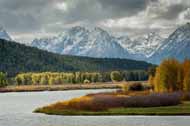 |
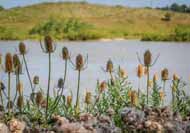 |
|
|
||
 |
 |
 |
|
|
||
 |
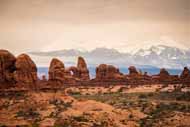 |
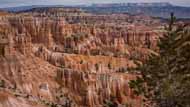 |
|
|
||
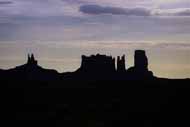 |
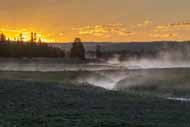 |
 |
|
|
||
 |
 |
 |
|
|
||
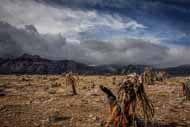 |
 |
 |
|
|
||
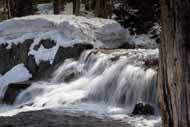 |
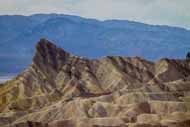 |
 |
|
|
||
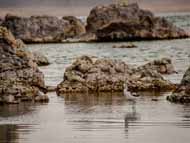 |
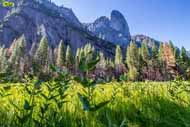 |
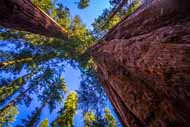 |
|
|
||
 |
 |
 |
|
|
||
 |
 |
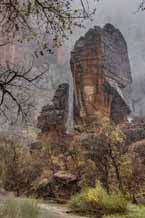 |
|
|
||
 |
 |
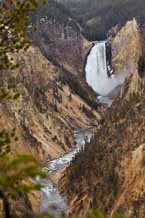 |
|
|
||
 |
These photos were taken in many of our National Parks, Monuments and parklands. As you read this, I’m off to other outdoor places to experience more of our earth. | 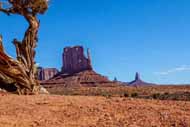 |
|
|
||
To the best of my ability I continue to practice “leave no trace photography” – disturb neither our wildlife nor its surroundings. Photography, whether conventional or digital, is a gift that lets me enjoy the wonders of our amazing world visually. I think many others agree.
Again I say Happy Earth Day!
More Information
Here’s a few articles that touch on the conventional vs digital photography debate.
- Five environmental impacts of electronic communications
- The Environmental Impact of Digital Photography
- Environmental impact of digital cameras compared to film
- How Photographers Are Reducing Their Environmental Impact
- How to Be an Environmentally Friendly Photographer
For those of you who are interested in the movement, here is a link to one of the main Earth Day sites.
************************************************************************
Written by Arnie Lee, former flower child and founder of Stay Focused.
Please leave your comments below or address your thoughts about this article, to Arnie via email
|
Canadian Railroad Trilogy By Gordon Lightfoot |
 |
|
There was a time in this fair land when the railroad did not run When the wild majestic mountains stood alone against the sun Long before the white man and long before the wheel When the green dark forest was too silent to be real But time has no beginnings and history has no bounds As to this verdant country they came from all around They sailed upon her waterways and they walked the forests tall And they built the mines the mills and the factories for the good of us all And when the young man’s fancy was turning to the spring The railroad men grew restless for to hear the hammers ring Their minds were overflowing with the visions of their day And many a fortune lost and won and many a debt to pay For they looked in the future and what did they see They saw an iron road running from sea to the sea Bringing the goods to a young growing land All up through the seaports and into their hands Look away said they across this mighty land From the eastern shore to the western strand Bring in the workers and bring up the rails We gotta lay down the tracks and tear up the trails Open your heart let the life blood flow Gotta get on our way cause were moving too slow Bring in the workers and bring up the rails We’re gonna lay down the tracks and tear up the trails Open your heart let the life blood flow Gotta get on our way cause were moving too slow Get on our way cause were moving too slow Behind the blue Rockies the sun is declining The stars, they come stealing at the close of the day Across the wide prairie our loved ones lie sleeping Beyond the dark oceans in a place far away We are the navvies who work upon the railway Swinging our hammers in the bright blazing sun Living on stew and drinking bad whiskey Bending our old backs til the long days are done We are the navvies who work upon the railway Swinging our hammers in the bright blazing sun Laying down track and building the bridges Bending our old backs til the railroad is done So over the mountains and over the plains Into the muskeg and into the rain Up the St. Lawrence all the way to Gaspe Swinging our hammers and drawing our pay Driving them in and tying them down Away to the bunkhouse and into the town A dollar a day and a place for my head A drink to the living and a toast to the dead Oh the song of the future has been sung All the battles have been won Oer the mountain tops we stand All the world at our command We have opened up the soil With our teardrops and our toil For there was a time in this fair land when the railroad did not run When the wild majestic mountains stood alone against the sun Long before the white man and long before the wheel When the green dark forest was too silent to be real When the green dark forest was too silent to be real And many are the dead men too silent to be real |
|
|
Conviction Of The Heart By Kenny Loggins |
|
Where are the dreams that we once had? This is the time to bring them back. What were the promises caught on the tips of our tongues? Do we forget or forgive? There’s a whole other life waiting to live when One day we’re brave enough To talk with Conviction of the Heart. And down your streets I’ve walked alone, As if my feet were not my own Such is the path I chose, doors I have opened and closed I’m tired of living this life, Fooling myself, believing we’re right I’ve never given love With any Conviction of the Heart One with the earth, with the sky One with everything in life I believe we’ll survive If we only try How long must we all wait to change This world bound in chains that we live in To know what it is to forgive And be forgiven? Too many years of taking now. Isn’t it time to stop somehow? Air that’s too angry to breathe, water our children can’t drink You’ve heard it hundreds of times You say you’re aware, believe and you care, But do you care enough To talk with Conviction of the Heart? |
CES 2015 – Photo Accessories
26th January 2015
The Consumer Electronics Show – Accessories for Photographers
I’ve been attending the Consumer Electronics Show for more than 30 years. This huge expo is the premier showcase for new and innovative products that are slated for homes and businesses this year.
While walking the several miles of aisles at the Las Vegas Convention Center, a couple of areas especially caught my attention: 3D printers and drones. You can read my show reports here: 3D Printing Technology and Drones.
But as someone who also has a keen interest in photography, here are a few of the photo accessories that stood out at the show.
Hisy and Halo Remotes
Here’s are two tiny little accessories for those of you who are fans of “selfies”.
|
|
 |
 |
| Basically the Hisy and Halo are bluetooth shutter release for you smartphone. The Hisy is for iOS devices and the Halo is for Android devices.
To the right is the “selfie” of Jackie and myself that we took with her Android smartphone. They also have the Wing – a selfie stick. The suggested price of the Hisy and Halo is $24.99. The suggested price of the Wing is $29.95. |
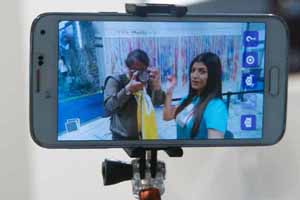 |
| For more information, please visit HisyPix.
|
|
Nanuk Camera Cases |
|
| If you’re rough on your camera equipment, you may want to look at Nanuk’s cases. PlastiCase makes some very durable protective cases.
Below is one of their smaller cases. It’s made of a impact resistant plastic, has sure-lock latches, soft-grip handle and is waterproof. This 903 model easily accommodates one of my mirrorless cameras with an 18-200mm lens attached. I’ve removed the foam padding to show the spacing. The Model 903 has a very affordable suggested price of $25. |
 |
 |
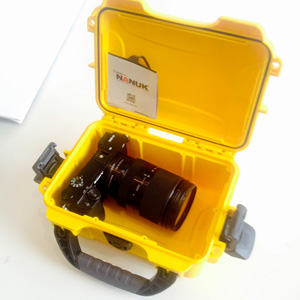 |
|
PlastiCase makes about two dozen different cases in various sizes. For more info, please visit PlastiCase.
|
|
EnerPlex Solar |
|
| EnerPlex is a manufacturer of a variety of solar chargers.
If you’re shooting out in the field for any length of time and run out of juice, these solar chargers may prove invaluable. They are compact, foldable and ruggedized. On the right, you can see solar chargers built into backpacks. EnerPlex has two backpack models: Packr Executive $130 and Packr Commuter $100. |
 |
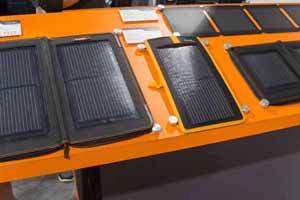 |
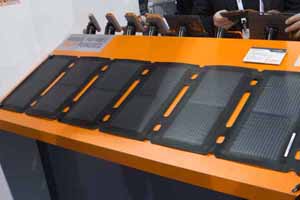 |
| For more info, please visit EnerPlex.
|
|
Thule Camera BagsThule is probably best known as the maker of the well-built and ergonomic car top carriers. This Swedish company also has a stylish line of camera bags and backpacks. |
|
 |
 |
| Their new Legend GoPro Backpack was introduced at the show.
Designed and built for rugged outdoor use, you can mount two GoPro cameras directly to the backpack – one forward-facing the other backward-facing. The outermost compartment has die-cut foam insert for GoPro accessories. It’s lightweight and crushproof (EVA shell) and has several other padded compartments for safe transport of camera accessories, hydration reservoir and smartphone. Thule tells me that the Legend GoPro Backpack will be available in May. Suggested price is $199. |
 |
| For more info, please visit Thule.
|
|
Meikon Diving Equipment |
|
| For divers and shooters needing protection against water, Meikon had a large array of waterproof housings and accessories for many popular camera models.
On display were housings for Sony mirrorless, Nikon D7000, Canon 5D, Canon M, Canon T2i, T3i, T4i, T5i, Panasonic GF2, GF3, GF5 and GF6. Meikon also has a nice selection lighting equipment and brackets. |
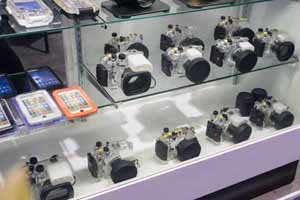 |
| For more info, please visit Meikon.
|
|
This concludes my reports from CES.
As usual, I’m excited when I return home from CES. Maybe a few of my finds will get added to my wish list for this year.
Written by: Arnie Lee
Updated 02/20/2015
Earth Day 2014
20th April 2014
…crawling forward at a snail’s pace
|
|
||
|
“April 22 marks the 44th anniversary of the first Earth Day. This topic has been on my mind so much so that I’ve written and rewritten this article several times over the years. Here is my recollection of some of the thoughts that have followed me since this movement was in its infancy.” |
 |
 |
|
|
||
As April arrives each year I’m reminded of Earth Day.
This year I’m dumbfounded as I have yet to read, hear or see mentioned anything about Earth Day. I suppose the environment has taken a back seat to events like the confounding search for Malaysia Air Flight 370, the unraveling crisis in the Ukraine or the sorrowful sinking of a ferry off of South Korea.
While I consider myself quite concerned about the environment, I’m certainly not a tree hugger. Yet as the years pass by since Earth Day 1970, it’s apparent that the general public is stuck in low gear on this topic.
Regardless, maybe you’d like to follow along as my mind becomes unstuck in time.
From the time I first started reading his black humor, novelist Kurt Vonnegut has been one on my favorite authors. He died in April 2007 shortly before the original version of this article was published. The news coverage of his life and death took me back to the late 60’s when I was a student at the University of Michigan (U of M) in Ann Arbor. Vonnegut was invited to be “writer in residence” and as one of the most widely read authors of the day, he was sure to have a large, welcoming audience at U of M.
He sometimes frequented “The Brown Jug”, a small, local campus restaurant where he’d have breakfast and smoke lots of cigarettes. As an aside, Vonnegut claimed that smoking was the slowest form of suicide. My wife Kris, also a student, waitressed at The Brown Jug and on occasion would wait on him. But owing to a hearing difficulty she admitted that she wasn’t a very good waitress and frustrated the celebrated writer with her (lack of) service. More to the point, his purpose on campus as writer in residence ended prematurely when he suddenly left declaring: “I’m leaving Ann Arbor since I have nothing more to teach you about writing.” So it goes.
To put things in the proper perspective, 1970 was a very vibrant and exciting, yet conflicted era. I’m reminded of Charles Dicken’s quotation in my high school yearbook which aptly describes the period: “it was the best of times and it was the worst of times….we were all going direct to heaven, we were all going direct the other way”. This was the period of Viet Nam and Kent State, living off the earth and making peace, hippies and long hair. We were contemporaries of heavy metal, Motown, The Beatles, James Taylor and Woodstock music. With this as a backdrop, we happen upon the Earth Day 1970 teach-in at the U of M.
Shortly after Vonnegut’s departure, the well-known folk song artist Gordon Lightfoot came to Ann Arbor to perform for more than 12,000 screaming students. Gord had been drawing large audiences around the US, Canada and Europe with his classic Canadian Railroad Trilogy (click for lyrics), a poetic ballad describing the building of the railroads across Canada and the difficult tradeoffs between developing the economy and keeping the land pristine for the future. His music was great back then and to this day, I remain a Lightfoot fan. I was so much the fan that a few years ago I traveled to Las Vegas (by myself since no family member wanted to accompany me) to hear him in concert. And I ended up staying for two of his performances. I even have a life size poster of Gord which was gifted to me by the advertising manager of the casino.
Lightfoot’s concert was part of the first Earth Day teach-in, a gathering of some 50,000 in Ann Arbor to discuss, educate and find solutions to environmental problems created by the earth’s inhabitants. From all of the excitement and the energy which went into the production of the first Earth Day teach-ins, many of us believed that we were on the verge of saving the environment.
As an economics student, I was counting on a future career that would revolve around conservation, ecology and recycling. I studied writings from the likes of educators and humanists Kenneth Boulding, Buckminster Fuller and E.F. Schumacher and took courses such as remote sensing of the environment and cost-benefit analysis.
My great enthusiasm for all things environmental waned some time after graduating with a degree in Natural Resource Economics. It was fully a year later that I was still trying to find a job in this nascent field. Instead, I ended up in the computer and publishing business. So it goes.
I tend to shy away from public discussions about politics so I won’t comment on how well or how poorly us earthlings have done to improve the environment over the past 44 years. However, like others, I have observed a very large and urgent movement in recent years to resurrect many of the same or similar ideas from these earlier decades that call for a change in our lifestyles.
A few years back we took two of our young grandkids to see The Lorax, a movie based on a Dr Seuss’ book. It describes a place where the trees have been clear cut so there are no trees left. Everyone depends on manufactured air to provide oxygen for their survival. Through battle with “industry”, the hero finally succeeds in planting a single tree. This act restarts the path to regenerating oxygen naturally. While the story is a little far fetched, it presents the oxygen depletion issue to a young generation.
Last year, we took them to see another movie – The Croods which depicts the struggle of a family of cave people to survive in a deteriorating world. They survive through human ingenuity with inventions such as fire, shoes and wheels. I hope this isn’t the only lesson for our next generation – that technology alone is going to save our environment. Yes, we are quite ingenious. But a lot of us have reservations that technology by itself will solve our planet’s woes.
Photography and the Environment
So what does all of this rambling have to do photography? Well, to continue in the same vein, I thought it might be interesting to look at photography then and now to compare their individual environmental impacts.
At first, I thought this was going to be a “no brainer” – that digital photography yields huge environmental savings compared to conventional photography. But as I began to dig deeper, I see that there are two sides to this argument.
Conventional Photography
Having worked in several commercial photo labs long before the advent of digital, I’m familiar with the processes that are used in conventional (film-based) photography.
Most conventional cameras use a cartridge or cannister filled with film for 12, 20 or 36 exposures. Each “roll” of film is individually packaged for sale in hundreds of thousands of retail locations. Besides the resources needed to manufacture the film, a considerable amount more are used to market and distribute the products.
Film derives its light sensitivity from a chemical mixture of silver halide that’s coated onto its surface. After being exposed to light by the camera, the film is first “developed” – the silver halide image is converted into a metallic silver and then “fixed” – the unused silver halide is dissolved. This makes the negative image permament. Color film requires additional chemicals to form the dyes used to reproduce the various colors. And still other chemicals are used to enhance the drying of the photographic materials. In addition to these chemicals, a large amount of water is used to rinse and clean the chemicals from the surface of the film.
Conventional photographic prints are processed similarly using a silver halide sensitive paper and chemicals to develop and fix and wash the positive images. Most commercial photo labs make prints from each exposure on a roll of film.
The environmental impact of conventional photography is significant. A large amount materials is consumed to make film and photographic paper. A large amount of nasty and toxic chemicals are used to process both the film and prints. And an awfully large amount of fresh water is used in the process as well.
Digital Photography
At first glance, the coming of age of digital photography appears to have a beneficial impact on the environmental.
With digital, no longer is there a need for roll after roll of film. Instead a single chip (SD-card or CF-card) can capture hundreds, maybe thousands of images.
Now, these digital images no longer require chemical development. Rather, the images are immediately available to review while still in the camera. For permanance, the images can be copied to your computer hard drive for safekeeping, further enhancement and presentation.
Unlike conventional processing where each exposure is mindlessly printed by the photo lab, you can be more selective. Instead you can choose to print only the best of the best images. And it’s your choice to print them using a conventional photo process at your favorite photo lab or print them at home on your color ink-jet printer.
Regardless of which camera you’ve purchased, digital photography seems like a winner from an environmental standpoint.
The Rest of the Story
As with many things in life, digital photography has a few “gottcha’s” that cloud its environmental friendly moniker.
The upside is that digital provides big savings in resources by eliminating film, packaging, paper and chemical processing. However, digital shifts the resource burden to the manufacturing and maintaining of the personal computer. Yes, there are some who make do without a personal computer. These picturetakers bring their digital film to a photo lab to make their selected prints. But most picturetakers collect, organize, retouch, process and present their photographs using a personal computer.
While it’s dated, a United Nation report tells us that “the average 24 kg desktop computer with monitor requires at least 10 times its weight in fossil fuels and chemicals to manufacture, much more materials intensive than an automobile or refrigerator, which only require 1-2 times their weight in fossil fuels. Researchers found that manufacturing one desktop computer and 17-inch CRT monitor uses at least 240 kg of fossil fuels, 22 kg of chemicals and 1,500 kg of water – a total of 1.8 tonnes of materials.”
Of course a personal computer is used for other tasks as well, so it’s not fair to put the full blame for digital photography’s negative impact on the environment.
And to power all of these cameras, computers and accessories the need for electricity either from the wall outlet or batteries is climbing. Does this contribute to our CO2 footprint?
Not surprisingly, manufacturers are working feverishly to add new and amazing whiz-bang features to their cameras. But now instead of buying a conventional camera every ten years or so, the buying cycle for digital cameras is a lot more frequent. Read: more resources consumed.
Wrapping it Up
We can credit the overwhelming adoption of digital cameras for saving the environment from millions of rolls of film and the required chemicals to develop the the film and prints. In addition to the great quality of digital technology, we benefit from a huge reduction of harmful photographic chemicals.
Unfortunately, from an environmental standpoint, digital photography is a mixed bag when considering the pervasive number of new cameras and extensive use of the personal computer.
In his novel Slaughterhouse Five, Kurt Vonnegut might comment on this no-win situation with the phrase so it goes.
Last year I wrote another article that might be of interest if you’re following the status of our environment.
After all of these years as an avid photographer I’m still a proponent of carefully using our precious natural resources. Aside from photographing family, my favorite pastime is nature and landscape photography. To see some of the ways that I commune with nature, please click here.
To the best of my ability I continue to practice “leave no trace photography” – disturb neither our wildlife nor its sourroundings. Photography, whether conventional or digital, is a gift that lets me enjoy the wonders of our amazing world visually. I think many others agree.
Happy Earth Day!
More Information
Here’s a few articles that touch on the conventional vs digital photography debate.
- Five environmental impacts of electronic communications
- The Environmental Impact of Digital Photography
- Environmental impact of digital cameras compared to film
- How Photographers Are Reducing Their Environmental Impact
- How to Be an Environmentally Friendly Photographer
For those of you who are interested in the movement, here is a link to one of the main Earth Day sites.
************************************************************************
Written by Arnie Lee, former flower child and founder of Stay Focused.
Please leave your comments below or address your thoughts about this article, to Arnie via email
|
Canadian Railroad Trilogy By Gordon Lightfoot |
 |
|
There was a time in this fair land when the railroad did not run When the wild majestic mountains stood alone against the sun Long before the white man and long before the wheel When the green dark forest was too silent to be real But time has no beginnings and history has no bounds As to this verdant country they came from all around They sailed upon her waterways and they walked the forests tall And they built the mines the mills and the factories for the good of us all And when the young man’s fancy was turning to the spring The railroad men grew restless for to hear the hammers ring Their minds were overflowing with the visions of their day And many a fortune lost and won and many a debt to pay For they looked in the future and what did they see They saw an iron road running from sea to the sea Bringing the goods to a young growing land All up through the seaports and into their hands Look away said they across this mighty land From the eastern shore to the western strand Bring in the workers and bring up the rails We gotta lay down the tracks and tear up the trails Open your heart let the life blood flow Gotta get on our way cause were moving too slow Bring in the workers and bring up the rails We’re gonna lay down the tracks and tear up the trails Open your heart let the life blood flow Gotta get on our way cause were moving too slow Get on our way cause were moving too slow Behind the blue Rockies the sun is declining The stars, they come stealing at the close of the day Across the wide prairie our loved ones lie sleeping Beyond the dark oceans in a place far away We are the navvies who work upon the railway Swinging our hammers in the bright blazing sun Living on stew and drinking bad whiskey Bending our old backs til the long days are done We are the navvies who work upon the railway Swinging our hammers in the bright blazing sun Laying down track and building the bridges Bending our old backs til the railroad is done So over the mountains and over the plains Into the muskeg and into the rain Up the St. Lawrence all the way to Gaspe Swinging our hammers and drawing our pay Driving them in and tying them down Away to the bunkhouse and into the town A dollar a day and a place for my head A drink to the living and a toast to the dead Oh the song of the future has been sung All the battles have been won Oer the mountain tops we stand All the world at our command We have opened up the soil With our teardrops and our toil For there was a time in this fair land when the railroad did not run When the wild majestic mountains stood alone against the sun Long before the white man and long before the wheel When the green dark forest was too silent to be real When the green dark forest was too silent to be real And many are the dead men too silent to be real |
|
